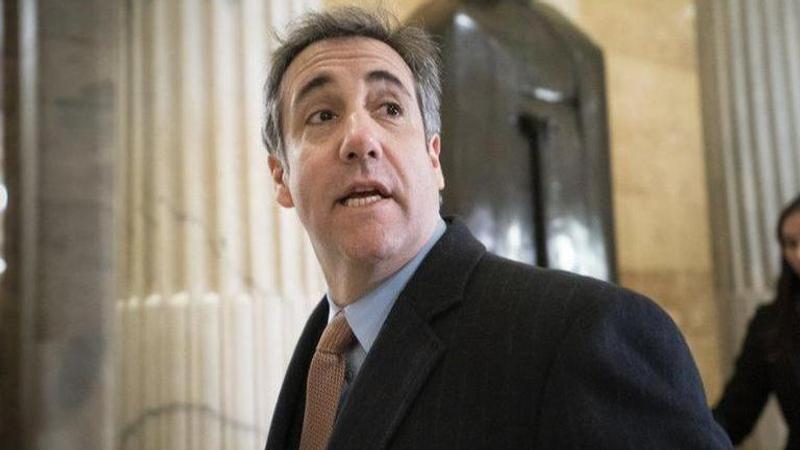Published 11:24 IST, April 28th 2020
Federal inmates battle mixed messages on home confinement
She never thought her husband's punishment for selling drugs would be a death sentence.

She never thought her husband's punishment for selling drugs would be a death sentence.
The 24-year-old inmate suffers from severe asthma at the medium-security South Carolina prison. He has tried and failed to get released to home confinement, while his wife on the outside watches high-profile inmates go free.
“He is at a way higher risk and it’s not fair,” said the woman, who spoke to The Associated Press on condition of anonymity because she feared her husband would suffer retaliation. "I don’t want to lose my husband for something he did years ago, to an illness he can’t help.”
The Bureau of Prisons has given contradictory and confusing guidance how it is deciding who is released to home confinement in an effort to combat the virus, changing requirements, setting up inmates for release and backing off and refusing to explain how it decides who gets out and when.
And it's unclear who is getting released, aside from high-profile inmates like
Advocates fear the same inequalities at play in the criminal justice system are also a factor now. Most white-collar defendants get lighter sentences in less-secure facilities, making them better eligible for release in the pandemic.
“These releases of the wealthy, of the white, are just a continuation of an institutional injustice that really begins more or less at the time of arrest,” said Ron Kuby, a longtime New York criminal defense attorney who represented one of the men wrongly convicted in the Central Park jogger case.
More than 1,100 inmates out of about 153,000 incarcerated in federal prisons nationwide have tested positive for COVID-19, though it's not clear how many total inmates have been tested. As of Monday, 28 inmates had died.
In a statement, the Bureau of Prisons said case managers were “urgently reviewing all inmates to determine which ones meet the criteria established by the Attorney General.”
Some, like Cohen and Avenatti, have access to private attorneys who can help them go around the federal officials and seek a judge’s order to set them free. The request by Cohen, President Donald Trump's former lawyer, had been denied by a judge, but the Bureau of Prisons eventually agreed to let him out. Avenatti, an attorney and frequent Trump critic, is free for 90 days from a federal jail as he awaits a fraud trial.
Former
Nonprofit groups are mustering pro bono lawyers, and at least 1,400 prisoners have requested help. But most inmates must rely on the Bureau of Prisons to review their case files and determine who might be eligible. A spokeswoman said all inmates in custody were being reviewed but those who believe they are eligible could also request home confinement.
The asthmatic in South Carolina told his family he's been turned away multiple times when he asked if there was even a form he could fill out to be considered for release, according to his wife. With five kids at home, he’d be unable to afford a lawyer to try to plead his case to a judge.
“I have seen high-profile (inmates) get out right away,” she said. “Myself and my husband cannot afford the $20,000 for a lawyer to file a motion.”
Nearly 40% of the estimated 10,000 inmates who are considered higher risk for COVID-19 — older, and suffering certain medical ailments — are serving sentences for violent crimes or sex offenses, making them ineligible for home confinement, according to Justice Department statistics.
But for the other 60%, there is confusion and mixed messages. Staff members have been given contradictory guidelines that change frequently.
And the agency canceled the early release of about 200 inmates. Many were already separated to undergo a 14-day quarantine before they could be sent home, and were abruptly returned to their cells and told they no longer qualified because the guidelines had changed. They wouldn’t be released unless they served 50 percent of their sentence, they were told.
The DOJ stepped in and officials said after receiving clarity they would “expeditiously transfer all inmates to home confinement who were previously referred for home confinement.”
The Bureau of Prisons now says the agency will prioritize the release of those who have served half of their sentence or inmates who have 18 months or less left and who served at least 25% of their time.
Kevin Ring, president of Families Against Mandatory Minimums, a prison reform group advocating for release that is helping find pro bono lawyers, said starting with low-level offenders made sense, and high-profile inmates are grabbing headlines because of their notoriety. But others, like Rufus Rochell, a 68-year-old incarcerated for three decades on drug crimes, have also been released.
One entire facility — a low-security prison camp that often houses white-collar criminals in New York — is being essentially shut down. Officials moved all inmates into quarantine for release. That included Cohen.
In the confusion, some federal judges have been stepping in.
Haena Park was ordered freed after serving about half of a three-year sentence for cheating 40 people out of $23 million. The Bureau of Prisons approved home confinement but said it needed another week.
U.S. District Judge Ronnie Abrams said she feared that leaving Park locked up could “convert a three-year prison sentence into a death sentence.”
Updated 11:24 IST, April 28th 2020




